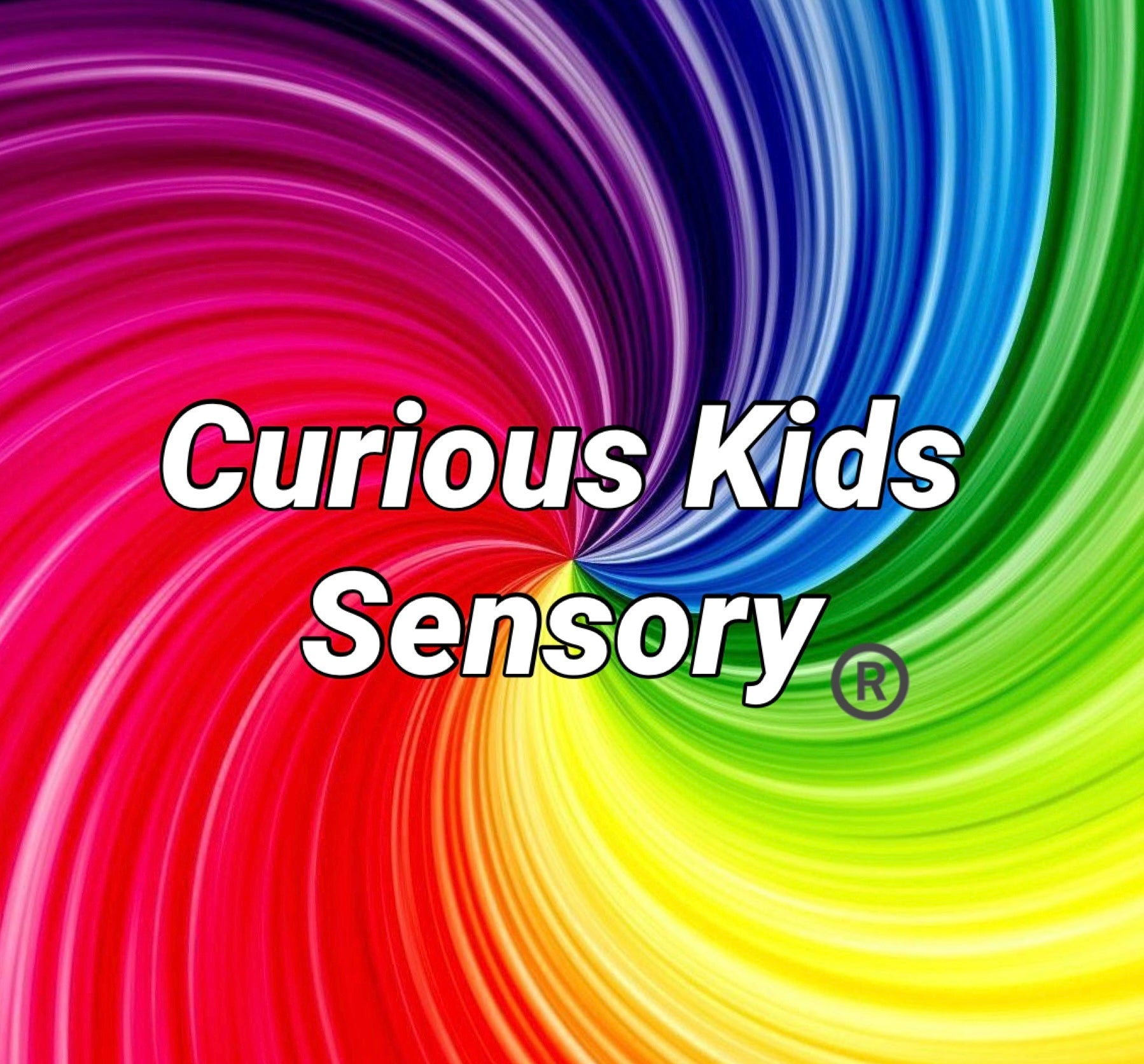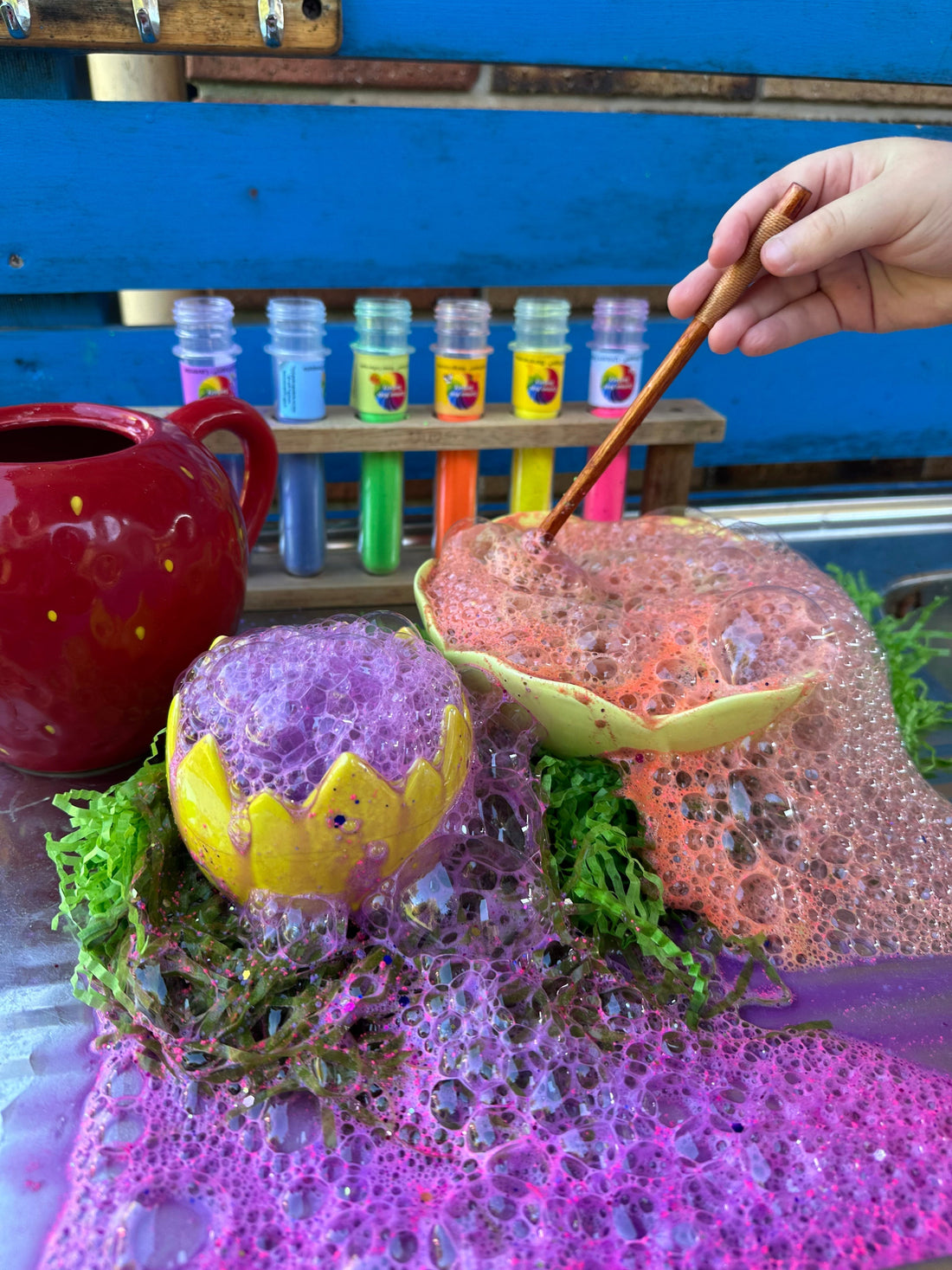Our Mud Kitchen Must Haves: What We Use and Why
Our mud kitchen is one of the busiest corners of our backyard.
It’s where the kids cook up muddy potions, mix fizzy brews, and throw themselves into sensory play. Over time, we’ve figured out which tools actually work best, the ones that get used on repeat, hold up to the chaos, and spark real, open-ended play.
Here’s what we use in our mud kitchen setup and why it works for us — plus a few things we avoid and why.
Our Favourite Mud Kitchen Tools
Wooden Accessories
We’re all about wooden accessories, they’re strong, earthy, and look amazing in a nature-based play space. Bowls, scoops, spoons, trays... all of it gets used constantly. But the one thing that always gets grabbed first? Our wooden test tube racks.
They’re perfect for displaying ingredients, setting up fizz experiments, and keeping everything organised. They also add that visual wow-factor when the fizz starts bubbling up, and best of all, they don’t take up much space.

Vintage Teapots & Silverware
We get all our silverware from op shops. It’s affordable, fun to hunt for, and adds a quirky, vintage charm to potion play. Teapots are always a hit, and every pour feels a little bit like a magical ceremony. 
Crates for Storage
Nothing fancy here, just wooden crates to chuck everything in when play wraps up. They’re practical, easy to move around, and keep everything together for next time. We got our wooden crate from Bunnings. 
Tools We Actually Use
We’ve collected a bit of a sensory toolkit over time, some bits we’ve hunted for, others we’ve stumbled across. But they all get used in different ways.
We rotate through whisks, sieves, pipettes, scoops, all kinds of cups, and so many spoons. There’s always a spoon in action, stirring, scooping fizz, or dishing out some muddy magic. Pipettes are a big favourite too perfect for squeezing, drizzling, and giving those fine motor skills a sneaky workout. They add a touch of science-y fun to every potion.
It’s not about having the perfect kit; it’s about giving kids tools that invite curiosity and experimentation.
Water Sources & Pouring Tools
Water is essential in any mud kitchen, whether it’s for mixing FizzOFoam, brewing potions, or rinsing tools at the end.
We’re lucky to have a gravity-fed rainwater tank hooked up to our setup, which is super handy. But honestly, a good old’ bucket of water does the job just as well. We also use a rotating water dispenser from Kmart, and the kids love pouring from jugs, squeezy bottles, and anything they can tip or squirt. If it pours, it’s play-worthy!
Scrubbing Brushes & Cloths
Kids naturally want to clean, especially when it’s woven into the play. We always have a few little scrubbing brushes and cloths nearby. They love washing tools, wiping benches, and looking after their space like it’s their own tiny workshop. 
Extra Space is Everything
One thing we’ve learnt? Having a little extra space or a spare bench nearby makes a huge difference. When the potions are bubbling, tools are flying, and florals are everywhere, it’s easy for the main workspace to get overwhelmed. A second table, tray table, or even an old pallet gives kids a spot to move between tasks, spread out their play, or reset mid-session. It doesn’t have to be fancy, just a bit of breathing room to keep the play flowing (and reduce the chaos).
What We Avoid
Plastic
We don’t usually reach for plastic. It breaks too easily, especially outside, and just doesn’t hold up to the way we play. We’ve had enough cracked cups and bowls and sad spoons to know better.
Glass (with supervision!)
We do use some glass, things like potion bottles, bowls, and conical flasks, but always with adult supervision. There’s something special about using real glass. It teaches kids to slow down, be a little more mindful, and they honestly rise to that responsibility. Plus, when you see fizz bubbling up through a clear bottle? Stunning. It’s that extra visual magic we love.
(Our test tubes are actually plastic though — best of both worlds!) 
Final Tip
Don’t stress about creating the “perfect” mud kitchen. Start with what you’ve got. Add pieces over time. Choose tools that invite curiosity and can be used in more than one way. That’s where the real magic happens — in the messy, ever-changing, fizz-filled fun.

